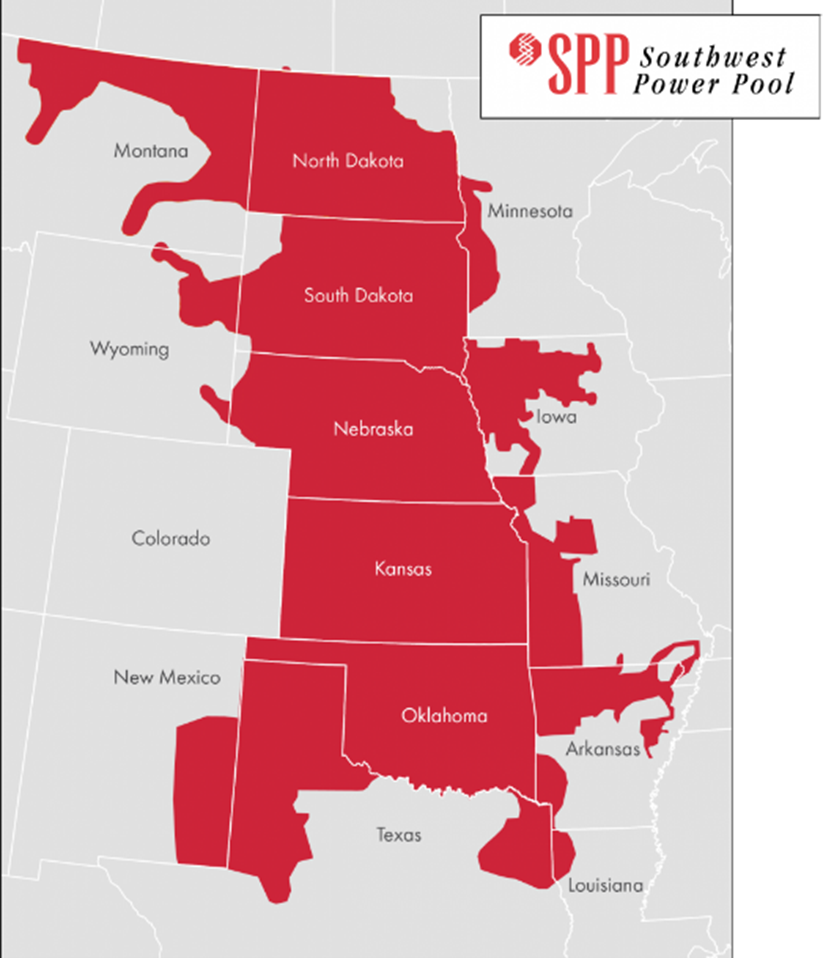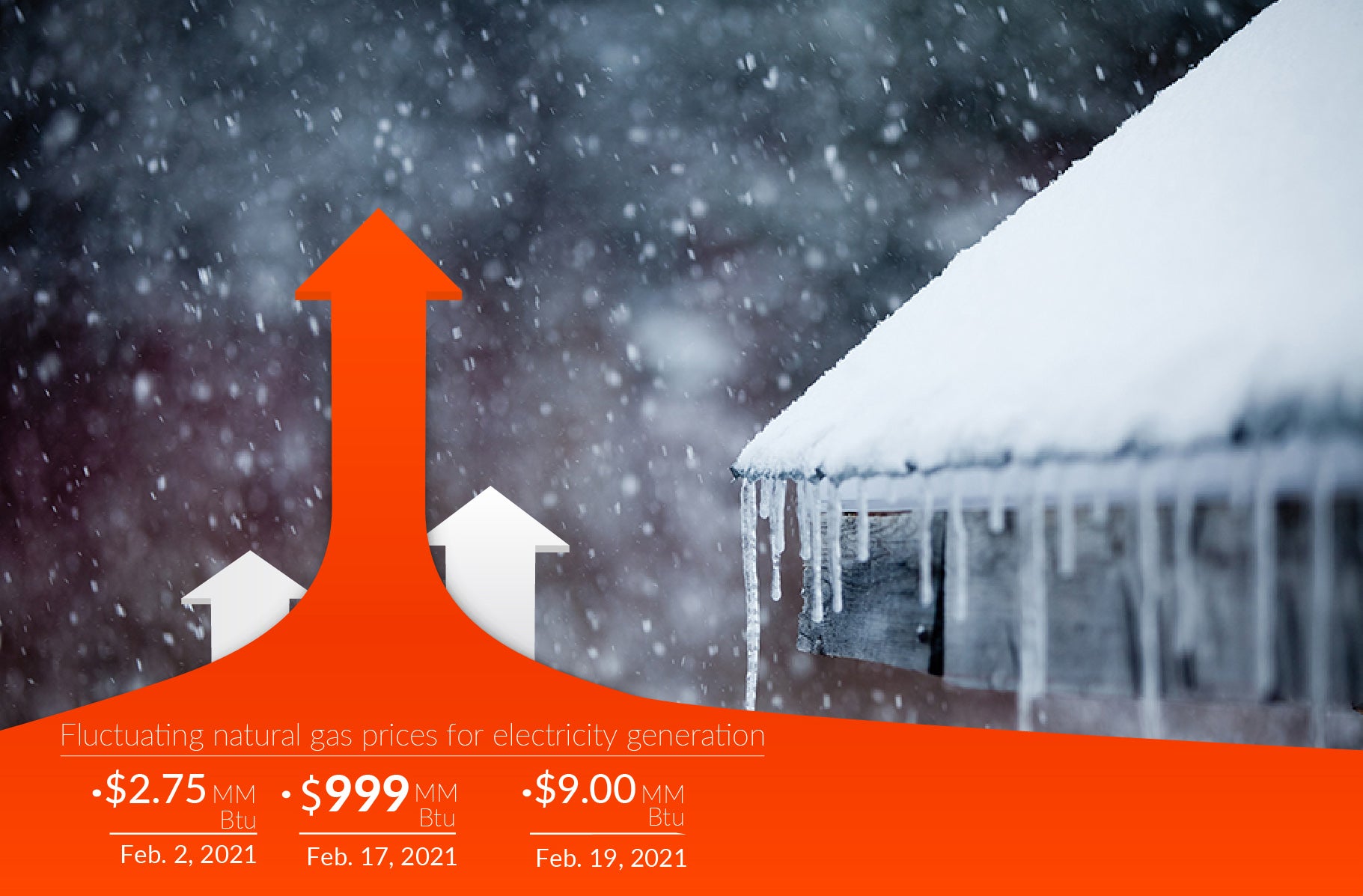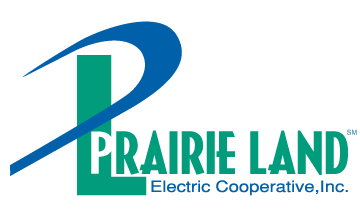February 2021
Every state in the Southwest Power Pool had historic, extreme cold weather that increased the demand for electricity and impeded the ability to generate it. This necessitated controlled service interruptions and created unprecedented cost increases.
The bottom line: Southwest Power Pool (SPP) issued a Level 3 Energy Emergency Alert for the first time in its 80-year history on Monday, February 15.
On February 9, 2021, SPP began a period of conservation in consideration of the cold weather. The cold temperatures were extreme, sustained for nearly a week, and covered almost all of the MidWest from the Dakotas to Texas. By Valentine's Day, the cold had started to affect natural gas pricing, and conservation warnings were issued due to power costs. By the following day, Energy Emergency Alerts began being issued.
Energy Emergency Alert Level 1: Available resources have been committed to meet obligations, and SPP is at risk of not meeting required operating reserves.
Energy Emergency Alert Level 2: SPP can no longer provide expected energy requirements and is an Energy Deficient Entity, or SPP foresees or has implemented procedures up to, but excluding, interruption of firm load commitments.
Energy Emergency Alert Level 3: At this level, SPP is utilizing operating reserves such that it is carrying reserves below the required minimum and has initiated assistance through the Reserve Sharing Group. SPP foresees or has implemented firm load obligation interruption. Before requesting an EEA 3, SPP will have already provided the appropriate internal notifications to its Market Participants.
For a full explanation, visit the SPP website for current grid conditions.

The Southwest Power Pool (SPP) is the regional transmission organization that oversees the bulk electric grid and manages the reliability for a 14-state region that includes Kansas. SPP does not generate electricity or own power lines or substations, but rather is tasked with operating the power grid in a safe and reliable manner.
They are tasked with ensuring reliable supplies of power, adequate transmission infrastructure and competitive wholesale electricity prices.
A responsibility of SPP is to declare and communicate the existence of any emergencies related to capacity and/or energy emergencies within the SPP area as necessary to manage, alleviate or end an energy emergency.

The extreme cold, which set records in many cities, created a high demand for electricity and a subsequent overload on transmission lines. It also crippled all types of power plants and fuel to some extent. The limited generation capacity was struggling to keep up with the increased demand.
Our members made extraordinary, voluntary efforts to conserve energy. This helped minimize the number and lengths of energy emergency alerts and service interruption orders issued by the SPP. It truly made a big difference, and we can't thank our members enough for the sacrifices they were willing to make to preserve the integrity of the grid.
While it's not uncommon to have cold weather in our area, this storm was unique in that it covered a very large region (more than 14 states) and the temperatures stayed at extreme lows for an extended period of time.
Since the entire SPP region was impacted by this storm, as well as other areas outside the SPP, the impact of this storm was more significant compared to other winter weather events.
Natural gas is a commodity and responds to supply and demand pricing. While demand went up dramatically in the extreme cold, natural gas wellheads were freezing up and failing to produce the necessary supply. Generators had to compete for what little that could be offered for sale.
The supply-demand situation caused historic high natural gas prices. The cost skyrocketed from $2.75 to $999/mmBtu between February 2 and February 17.

While it was hard to imagine the magnitude of the cold weather event just a few weeks ago, Prairie Land is facing unprecedented costs associated with the extreme cold weather from February. Prairie Land is not alone; many electric and gas utilities across the Mid-West incurred unprecedented cost increases.
To find a manageable method to bill members for the extraordinary costs associated with the February winter weather event, the Board of Trustees unanimously voted to approve the February 2021 Deferred Cost Rider to lessen the immediate financial impact on our members.
The rider allows the extraordinary costs to be broken into thirty-six (36) equal installments and will include carrying costs.
For complete information on the Deferred Cost Rider and how it will affect your bill, visit https://www.prairielandelectric.com/special-deferred-cost-rider
Stuart Lowry, president and CEO of Sunflower, gives a three-part insight into the February Cold Weather Event.
Part 1 explains load shed; Part 2 explains electric generation during the event; Part 3 gives insight into cost impacts.
In this video, Part 1, he explains load shed, the planned interruptions of electricity on Feb.15 and Feb. 16, which were mandated by the Southwest Power Pool to balance the electric grid.
In this video, Part 2, he explains electric generation during the event.
In this video, Part 3, he gives insight into cost impacts.
